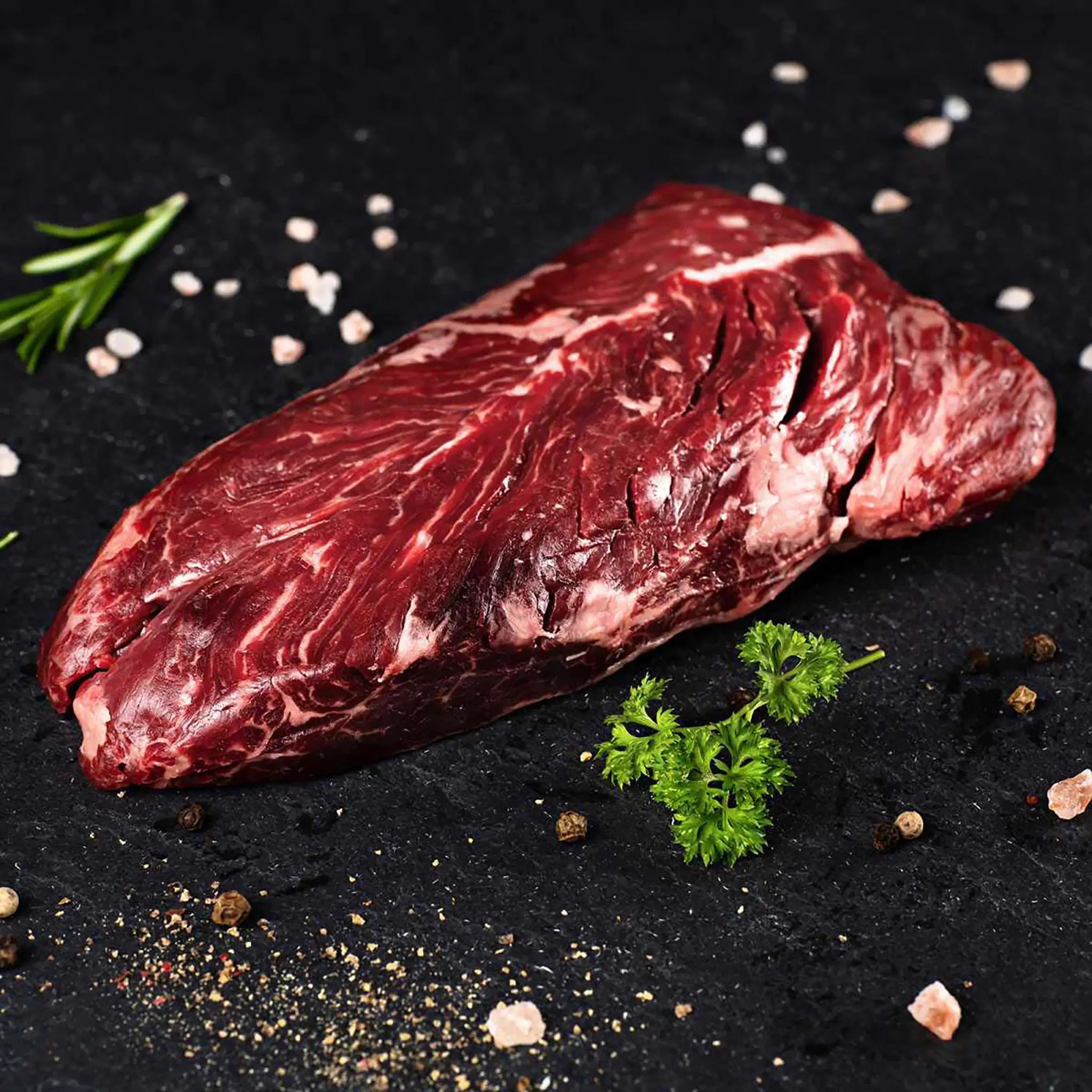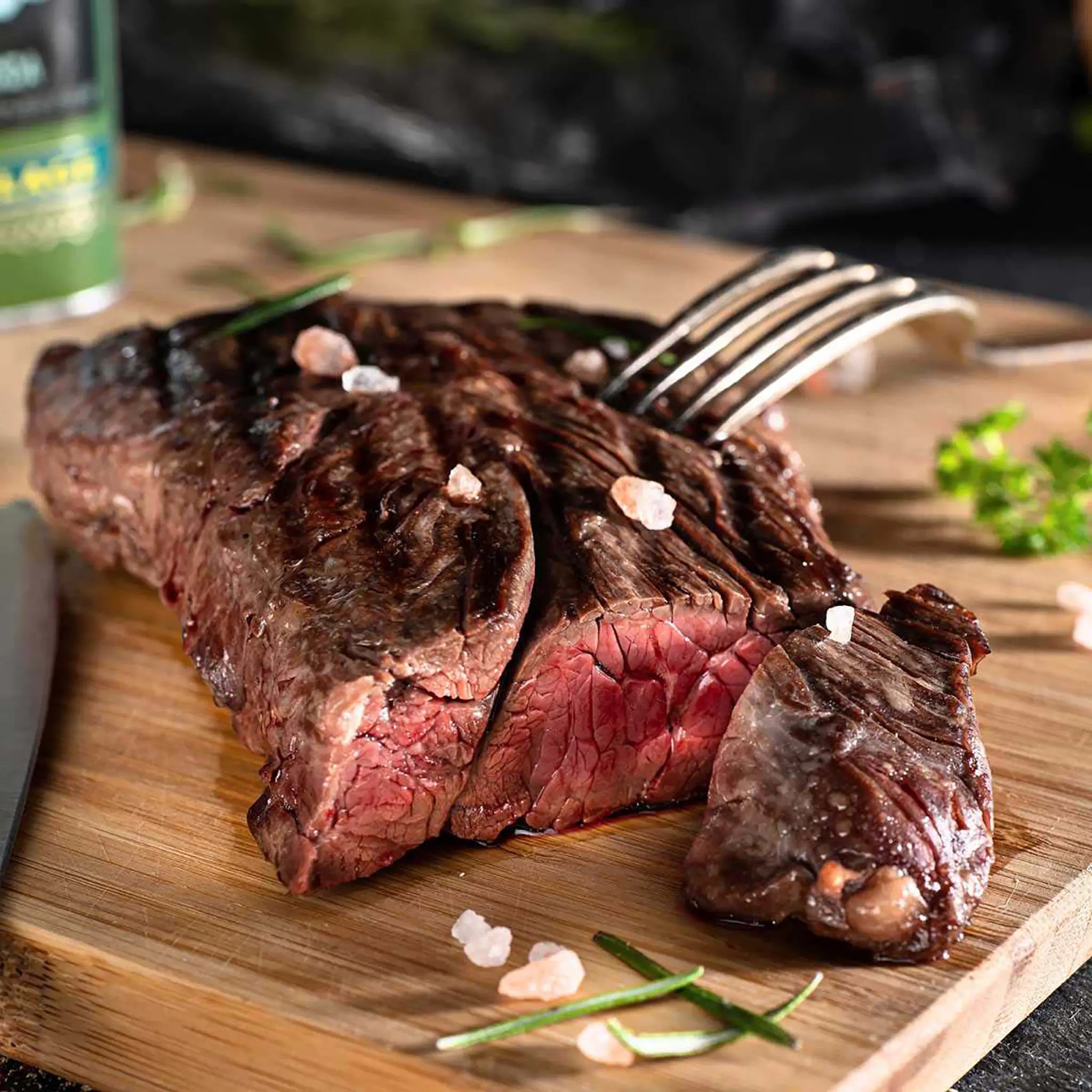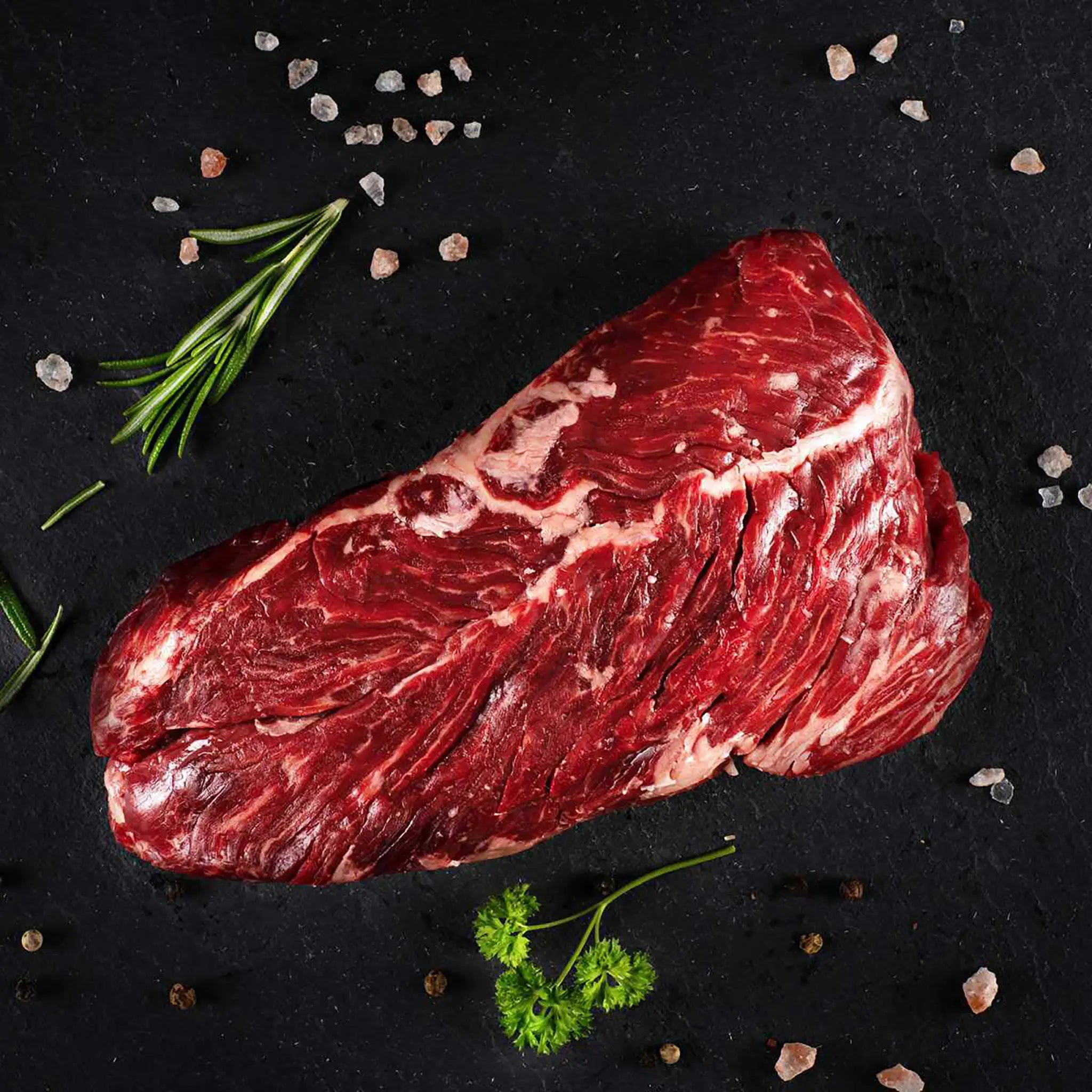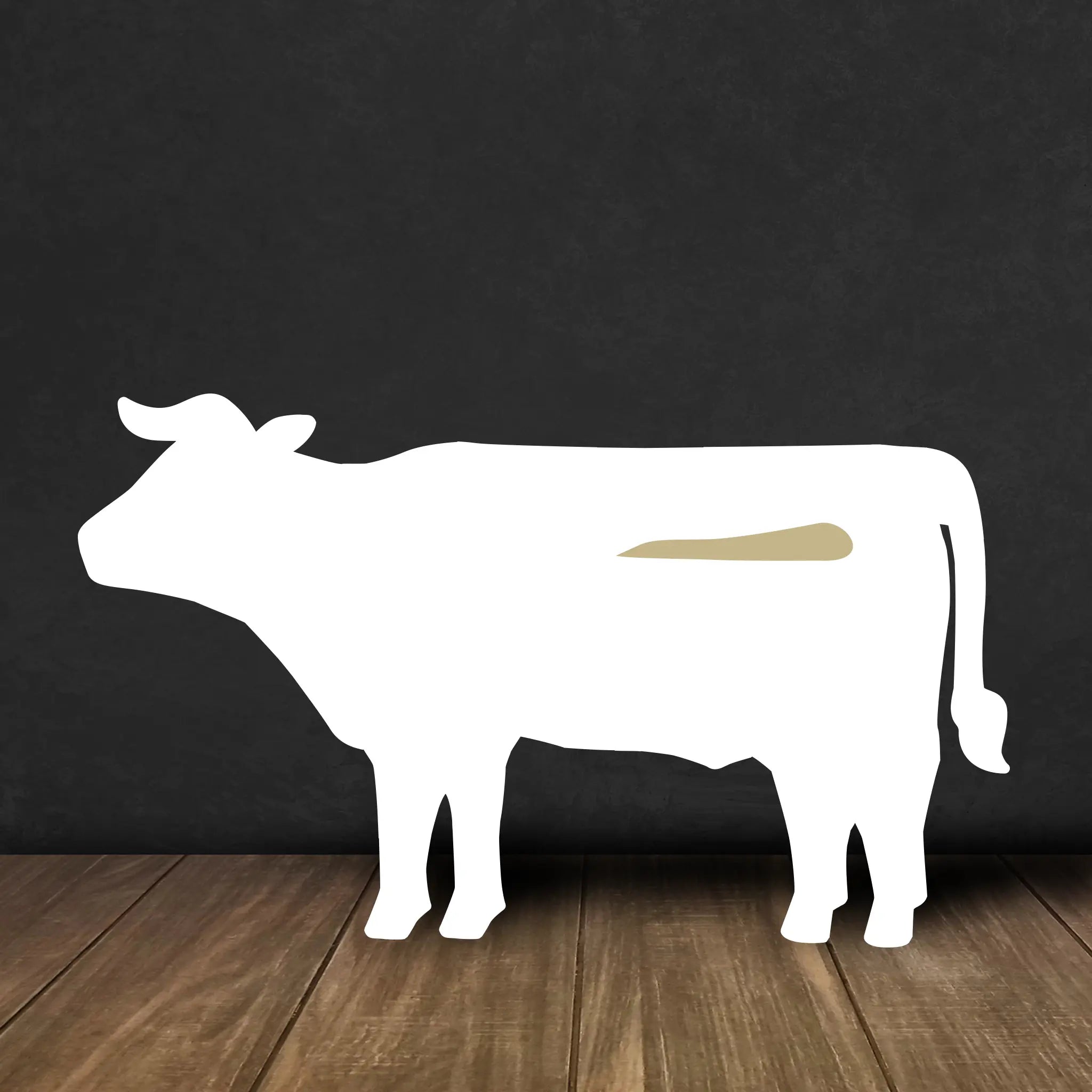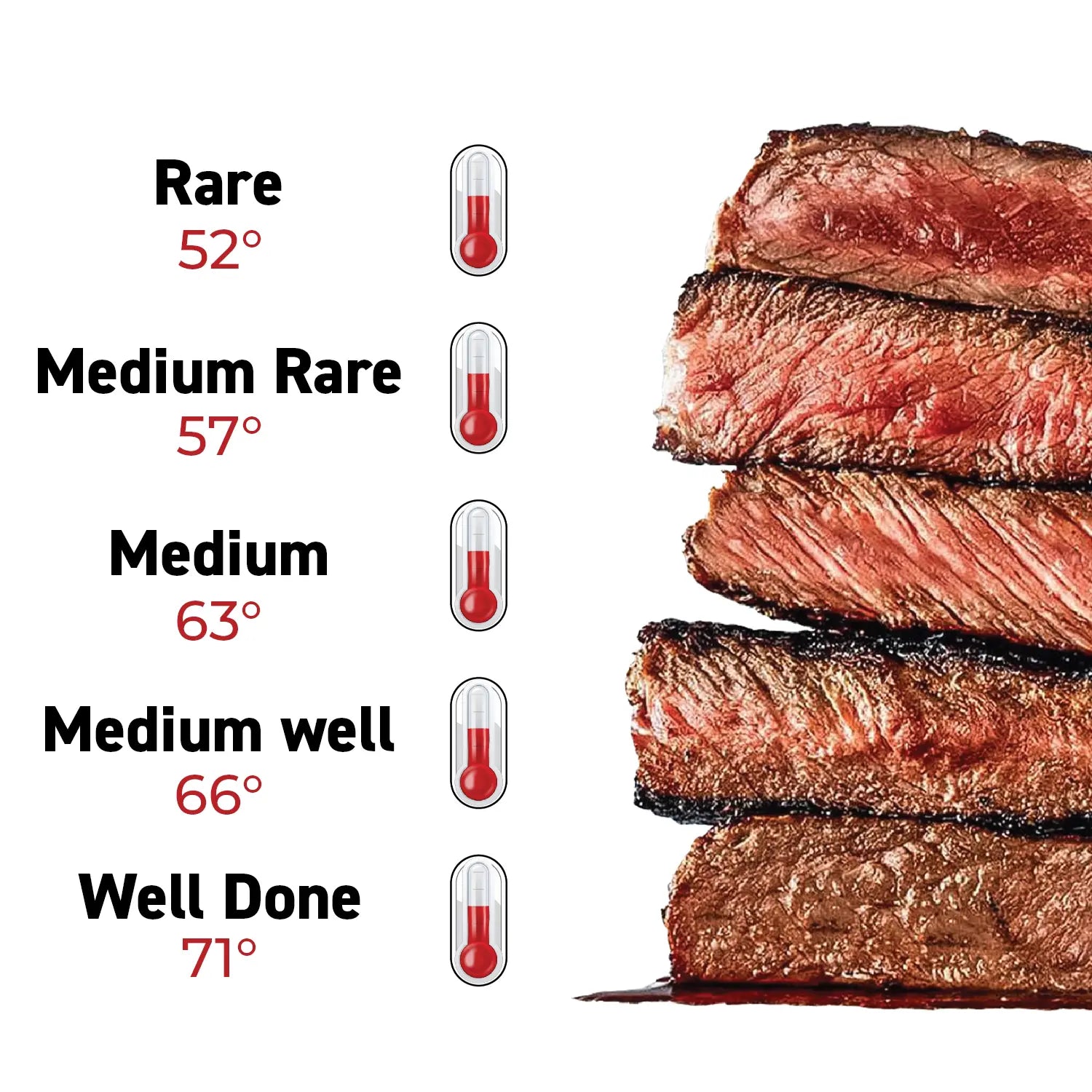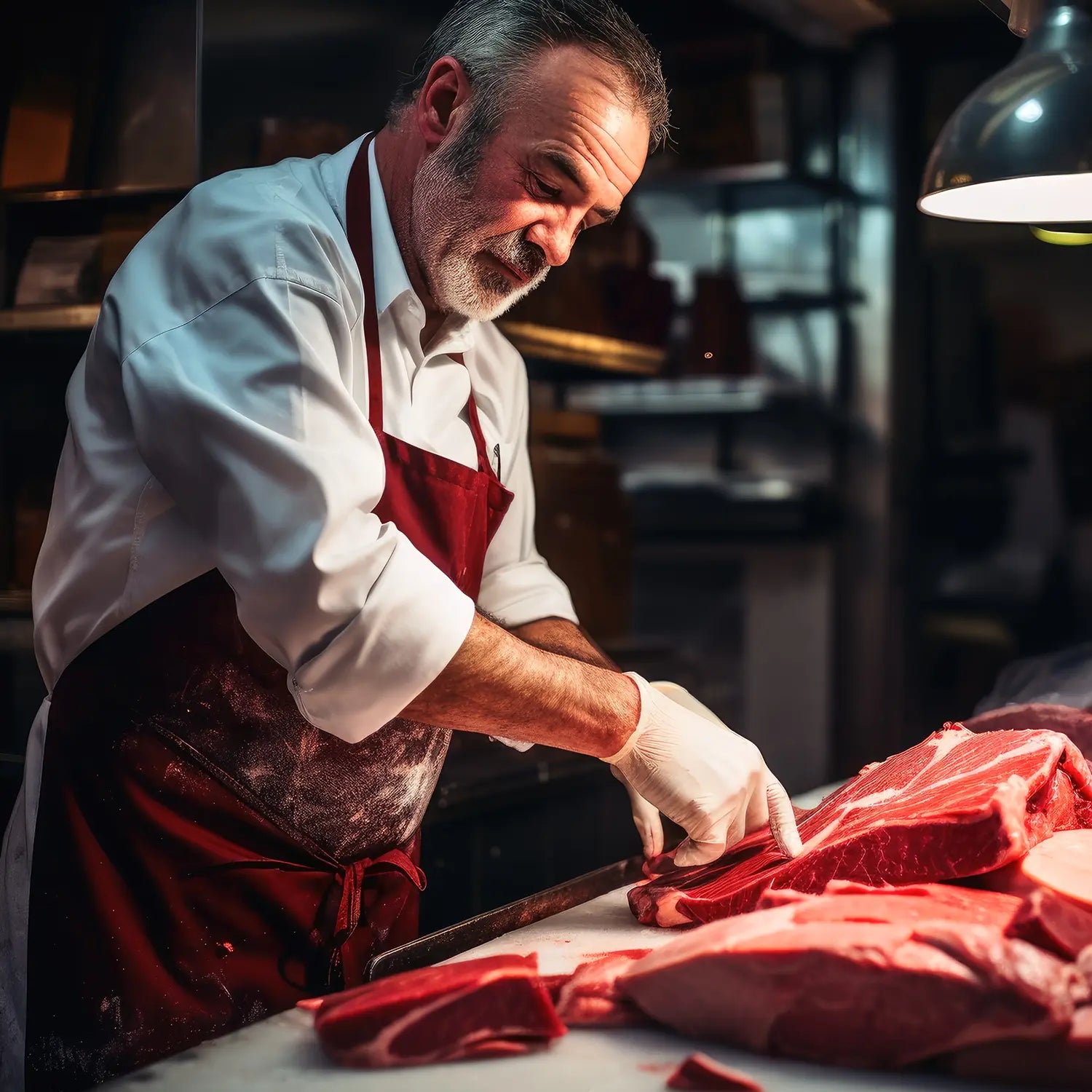Hanging Tender – A cone full of flavor
A steak that can compete with the fillet -The Hanging Tender has long been considered an insider tip in gourmet circles and is also winning over more and more palates in Germany. It is sold here as crown meat or kidney cone and in Italy as Lombatello. In France, its called onglet. It has long been on the menu of good restaurants. In England, this cut is known as the thick skirt.
Cut
The Hanging Tender cut is not yet so well known in Germany, as many meat cuts are traditionally processed and made into sausage specialties, for example. Currently, however, many BBQ trends come to Europe and bring with them a return to steak cuts, the so-called special cut. Due to their structure, they can be prepared like traditional steaks. They usually differ in bite and flavor from cuts made from the back.
Kidney cone
The hanging tender, for example, is a muscle that comes from the belly of the cow and supports the diaphragm. Although the name "kidney cone" suggests this, the hanging tender is not an offal. This muscle is structured like an X and is heavily marbled. This makes this steak cut extremely juicy and tender to the bite. The meat is short-fibered and intensely flavorful, making it ideal for quick frying and grilling because the fibers run perpendicular to the central tendon, unlike those from the back. This steak cut is particularly tender and can certainly compete with fillet. What makes this cut particularly valuable is that it only occurs once per animal.
Conclusion:
The hanging tender is a true all-rounder, and its flavor will complement your garden party just as well as a fine dinner for two. Its tenderness and intense flavor make it unique and will delight your palate.
The preparation
The hanging tender steak can be prepared in various ways. In one piece, for example Sous Vide Pre-cook, and then seared briefly. However, please note that the cut contains a strong tendon in the middle that cannot be eaten. Therefore, if you prepare it whole, the tendon must be removed at the table.
Hanging Tender Medallions
Of course, you can also remove the tendon before cooking and then have two pieces. These can be served as one piece or divided into smaller medallions in the pan. They can be fried or grilled. It's important that the medallions are at least 3 cm thick so that the small steaks stay nice and juicy and aren't served completely overcooked.
The medallions or cuts are first seared or directly grilled, then placed in an indirect cooking zone or in the oven to cook. The internal temperature is always a matter of taste. In any case, it should remain below 60 degrees Celsius (140 degrees Fahrenheit) so the meat is still nice and juicy when eaten. It's also important to remember that the meat will continue to cook a little more on the plate.
Hanging tender Sous Vide
Rosemary pairs perfectly with hanging tenders. You can use this during preparation, for example, by adding a rosemary sprig and a little olive oil to the sous vide bag. Break or bend the sprig slightly to allow the flavors to develop better.
Preparation on the grill
Grill the hanging tender directly over the heat and then let it cook in the indirect area until the desired core temperature is reached
Preparation in the oven
Let it simmer at approximately 120 degrees Celsius. Do not allow the core temperature to exceed 60 degrees Celsius, otherwise it will become too dry.
Preparation in the pan:
Brown the hanging tender well on all sides in butter and rosemary without seasoning.
Spices
The key to the hanging tender steak is that it's sliced across the grain for an even more tender bite. The meat has an intense, hearty flavor and requires minimal seasoning. A little coarse sea salt and your choice of pepper will suffice.
